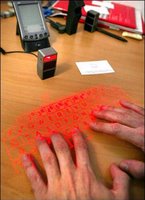Writing web applications is a time consuming process, and when the application begins to get popular, it may not have been built to scale and handle volume. A great example of this is Twitter, a popular web 2.0 application that often has downtime. Here are some ways you can build your application with scaling in mind.
- If you can, build your application with scaling in mind from the ground up. Write tighter code, test it against perceived loads, and continually try to lower the amount of time and resource usage required to run the application.
- Build your application on cloud computing. Services like Amazon's Cloud computing service allow you to host your code, databases and files on their servers, and can scale instantly with your demand. It also saves you money in the long run, as you don't need to constantly plan to build new servers, database clusters and bandwidth.
- If you're not using cloud computing, try using a grid hosting company. These are companies that can give you instant access to more resources as soon as the demand rolls in. The difference primarily lies in the pricing – cloud computing companies charge based on actual usage, while grid hosting companies will charge based on the amount of "slices" you need to meet your requirements over a month.
- Optimize your databases and queries. If you're not a true expert in Databases, hire a freelancer to optimize your code. Correctly writing queries, caching queries that are run often, and correctly building the structure of your database can make or break a web application.
- Use reusable, well documented code. Try not to reinvent the wheel –find classes and functions that have already been proven in the field, and use them for the heavy lifting part of your projects. Use frameworks and coding methods that have already been proven, and don't try building a heavy use platform on new or untested code.
This is a guest post authored by Maya Richard, who writes on the topic of high speed internet. You can email her at mayarichard@gmail.com with any feedback.
 Bookmark
Bookmark 










